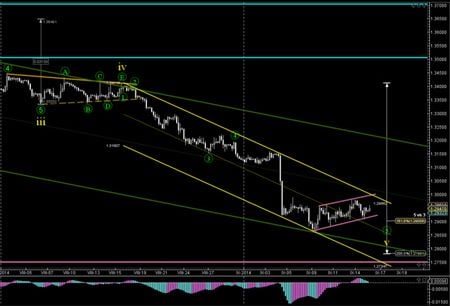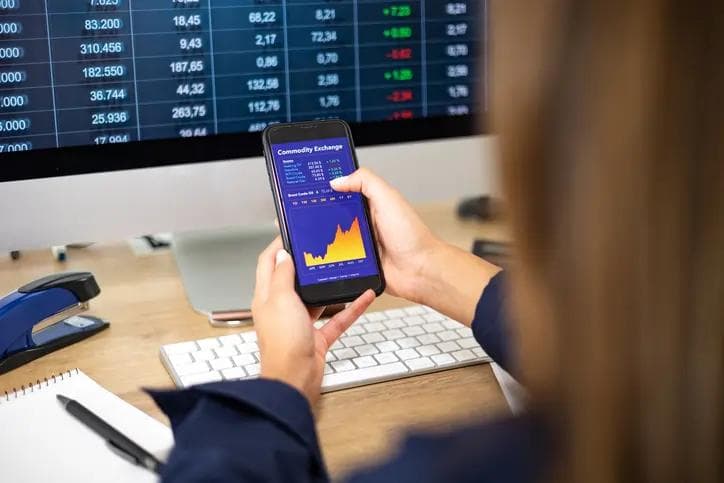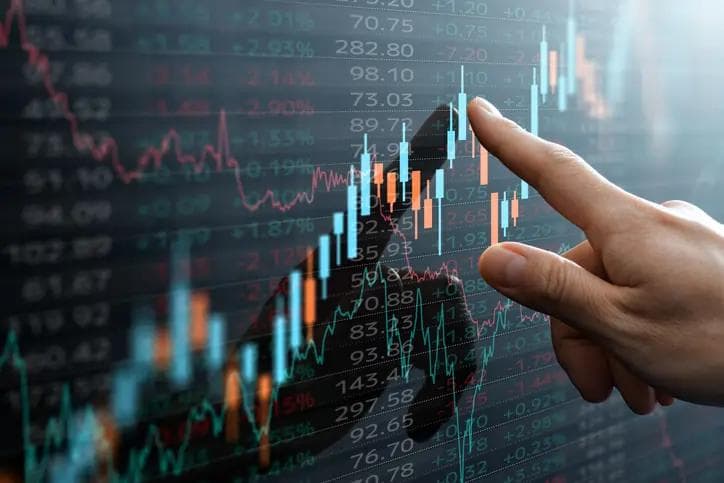FOREX FUNDAMENTALS: AN INTRODUCTION TO WAVE ANALYSIS
FOREX FUNDAMENTALS: AN INTRODUCTION TO WAVE ANALYSIS
Published by Gbaf News
Posted on September 20, 2014

Published by Gbaf News
Posted on September 20, 2014

Chris Svorcik is the lead educational strategist for Admiral Markets. With over a decade’s worth of experience in Forex, he has helped thousands of retail traders develop strategies which deliver strong and consistent returns. Using the lessons found in Admiral Markets’ free ‘Mastering Wave Analysis’ ebook, Chris shares some simple tips on how to master the Forex trading strategy.
The currency markets have a reputation for being unpredictable, and as such, they can easily confuse retail novice traders, price pairs fluctuate up and down, have unexpected violent spikes, and market trends can reverse for what appears to be absolutely no reason. Traders often wonder how such movements occur and how they can identify the factors that drive them. More importantly, they wonder how they can make a consistent profit when trading in such conditions.
I believe wave analysis is one of the most effective trading strategies which can answer these questions. In this article, I’ll explain the premise of wave analysis, its history and ties to technical analysis.
So what is wave analysis?
Before I provide an explanation of what wave analysis actually is, it’s important to identify what causes the price of a currency pair to change. Price is influenced by a country’s long-term macro-economic data and its political environment. These factors can affect the culmulative psychology of all the participants in the currency markets. It’s important to note that one trader alone will never be able to influence the price of the market – it’s the collective average psychology which makes price action bearish, bullish or choppy.
Wave analysis, also known as Elliot Wave analysis, is a trading method which allows traders to recognise and identify culmulative market psychology. The methodology is named after Ralph Nelson Elliott, who discovered that upward and downward trends of mass psychology occur in repetitive waves. History has proven this to be true, that’s why I believe wave analysis is one of the most effective trading strategies a Forex trader can master.
The Elliot Wave principle
The Elliot Wave principle is the theory behind the wave analysis methodology. The wave principle suggests that market prices behave in specific patterns – known as wave patterns – which are influenced by the forecast of supply and demand..
Put simply, the sum moods of investors form a collective investor psychology or crowd psychology, which influences price movement and the patterns they repeatedly make. Traders can then use the Elliot Wave principle to analyse financial market cycles and forecast market trends, simply by identifying extremes in investor psychology along with highs and lows in prices.
It’s important to recognise that wave analysis should actually be considered as a branch of technical analysis, whereby the analysis uses visual tools on price charts.
Corrective v Impulsive Waves
With the concept’s definition explained, it is time to dive into specifics of wave analysis. It comprises two types of patterns: impulse waves and corrective waves. Simply put, all price action must either be impulsive or corrective. Generally speaking, impulsive waves describe a strong move in a currency’s price, matching the overall direction of the underlying trend. This can also be true for strong downward movements in a downtrend. Corrective waves are the opposite of impulsive waves – they are currency price moves against the underlying trend. Together these waves form certain patterns, which form the basis of the Elliot Wave theory.
So how can a trader use a combination of these waves to make market predictions? Well much of Ralph Nelson Elliott’s work helps us here, as certain constants have been proven to be true in the financial markets. One of the most widely accepted constants within the financial markets is that every action is followed by an equal or opposite reaction. This is an important point that traders need to keep at the forefront of their minds.
When looking at the price of a currency and using wave analysis, traders can expect five impulsive waves which move in the direction of the main trend, followed by three corrective waves which are opposite to the trend. This is known as a 5 – 3 move and completes one cycle.
When using wave analysis, a traders job is to connect the dots and spot these cycles in order to anticipate the next moves and identify the likelihood of the next impulse or correction unfolding.
Many Forex traders are hesitant to learn wave analysis due to its seemingly complex attributes. However, as with any other aspect of life, learning a new skill takes a fair amount of dedication to apply successfully and wave analysis is no exception. The truth is that wave analysis is actually easier to implement than most traders realise – it can be likened to finding and fitting a piece to a jigsaw puzzle.
Explore more articles in the Trading category











